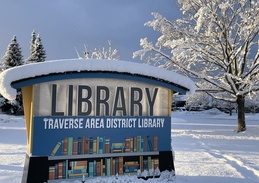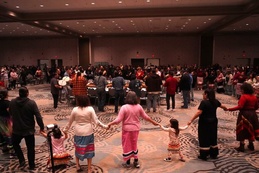Nostalgists vs. Newbies
Oct. 9, 2015
When I moved to Traverse City with my husband nearly seventeen years ago, I was amazed by the number of people who would ask just moments after introduction, “Are you native?”
It was as if the answer to this simple question could properly shape their opinion of me.
It got so ridiculous that I began to laughingly reply, “No, but my newborn daughter is!”
It’s a common friction in growing communities: Nostalgists vs. newbies.
How can you tell if someone is a nostalgist? They’re the ones with a historical perspective, being second-, third-, or even fourth-generation, while often complaining about the stream of newcomers.
Natives know and love this area, but without a less ideal geographical frame of reference — say, Detroit — it’s easy to take northern Michigan for granted. Many transplants, on the other hand, are nearly giddy with the awesomeness that is our fair city, and therefore might be more appreciative, even while lacking the context of the past.
I am troubled by the “us vs. them” mentality exhibited throughout our community over the years. The basic attitude of some natives goes something like this: “I’ve staked my claim — now get your own! And preferably somewhere else...”
Most recently, I’ve seen this mindset surrounding the proposed nine-story development and emergency homeless shelter proposals in TC. Many longtime residents have been carrying on about the loss of Traverse City’s “small town charm” and warn that increased density will damage our natural resources, increase traffic and pollution problems, and attract crime. The controversy swirling around the shelter reflects the all-to-common sentiment that ignoring a problem will somehow make it go away.
Growth brings homelessness and lack of affordable housing — big-city problems that nostalgists choose not to acknowledge.
These same folks claim that they prefer the way Traverse City “used to be,” while fully enjoying the increased benefits (and property values) derived from public and private investment over time.
When I arrived in Traverse City, there was a coal-fired power plant on the Open Space and a shabby zoo occupying Clinch Park. There was a huge hole in the ground next to Horizon Books and industrial waste on the property of the former Iron Works. The Grand Traverse Commons Redevelopment Corporation was considering bids to tear down historic Building 50, and the Warehouse District was a collection of run-down buildings sitting on contaminated land. The State Theater and Con Foster Museum were boarded up, and our airport was undersized and outdated. There was no Great Lakes Children’s Museum, Wuerfel Park or Hagerty Center. No parking decks, either.
Nostalgists might argue that they got by just fine before, but the skills, businesses, and money brought here by new thinking have been opening economic doors and improving our quality of life for decades — going back to Perry Hannah’s days. Traverse City now boasts top-rated schools, awardwinning restaurants, wineries and breweries, and rankings on countless “Top 10” lists.
Importantly, we need to continue to nurture this kind of smart growth in order to attract and retain millennials and their families. Without a constant influx of talented young workers, our community will age and eventually die out, and I sure don’t want to live in a town made up solely of retirees.
When voters rejected the Traverse City Area Public Schools’ millage request for capital improvements two years ago, my first thought was, “I hope this isn’t the beginning of the end. Don’t voters know that investment in our schools is what will keep our community thriving?”
The good news is more millennials are flocking to the close-knit neighborhoods, emerging businesses, and sense of “authenticity” that smaller cities like Traverse City provide. They value the ability to explore recreational and cultural opportunities while going carless, and enjoy finding unique ways to invest in their neighborhoods and community. They are attracting businesses, starting their own companies, and generally boosting the economies in these places. We need more of them.
So, let’s know and respect the history of our city, but welcome the transformative ideas and needs of the new bloods, especially the young ones. Without them, our community would be boring, homogeneous, and in decline.
Christie Minervini owns Gallery Fifty at The Village at Grand Traverse Commons, and is active in causes of education and homelessness in the Grand Traverse region.
Trending

Winter Break at the Library
Trying to keep the kids busy while school is out? Head to the library! Dec. 22, take your 12+ tweens and teens to the Mesick… Read More >>
Umbo Is Coming...to The Little Fleet
Winter isn’t just coming—it’s already here. But if you want a break from the December blues, head to The L… Read More >>
GTB Starting the Year with Tradition
The Grand Traverse Band of Ottawa and Chippewa Indians hosts the Kchi Wiikwedong Anishinaabek Maawnjidowin Round Dance on Ja… Read More >>


